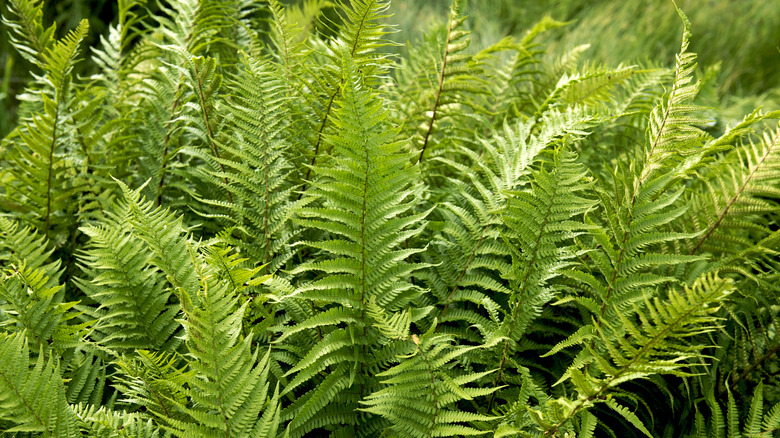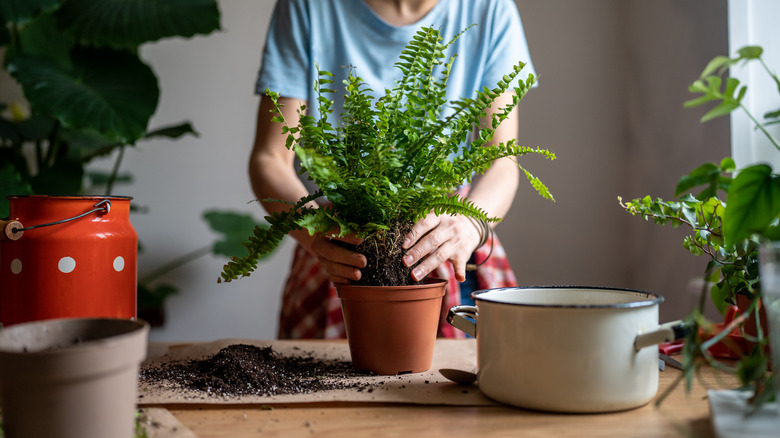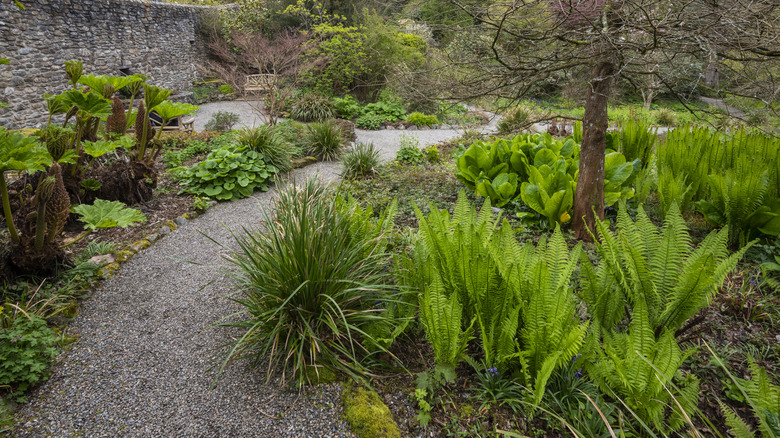This Kind Of Fertilizer Will Leave Your Ferns Luscious And Green
We may receive a commission on purchases made from links.
Ferns are known for their vibrant green foliage, which makes you feel as though you've been transported to a scene from Jurassic Park whenever you're near them. In fact, ferns grew prolifically in the Carboniferous period that occurred millions of years ago. However, for the modern-day fern grower, a browning frond can be a less-than-desirable look for the plant. You might be able to use Epsom salt to keep your ferns green, but you can also boost their growth and color with the right kind of plant food.
Although indoor and outdoor ferns have different fertilization needs, it's important to consider applying balanced, slow-release fertilizers to safeguard their appearance and health. This is because they do not respond well to excess fertilization. Heavy applications can burn their roots, therefore stunting their growth and affecting their color. In addition to using the right kind of fertilizer, you can avoid harming your fern by applying the plant food at the proper times.
The best fertilizer for indoor ferns
The best fertilizer option for your indoor ferns will be a liquid houseplant fertilizer with a 20-20-20 ratio of nutrients. Choosing a liquid fertilizer with this nutrient profile is ideal because its balanced formula prevents a surplus that can harm your ferns. Since a balanced fertilizer contains equal amounts of nitrogen, phosphorus, and potash, you won't have to worry about an excess of any single nutrient damaging the plant. Showering your plants with nutrients is actually a bad idea, and nitrogen, in particular, is known to cause fertilizer burn if over-applied. Additionally, a liquid fertilizer allows your ferns to quickly absorb nutrients to enhance their growth. As a bonus feature, this type of fertilizer is easy to apply.
Indoor ferns typically fare well with half the recommended amount of fertilizer on the label, which you can just pour on your plant's soil. When the fern is actively growing in the spring and summer, apply fertilizer monthly. As the plant's growth season winds down, provide one fertilizer application between the months of October and March. If your indoor plant has gone dormant for any reason, there's no need to fertilize.
How to fertilize outdoor ferns
Outdoor ferns will need to be fertilized differently compared to indoor ferns. When grown outside, ferns can get adequate nourishment from compost, but a light application of a slow release fertilizer works well, too. Osmocote 14-14-14 is a good choice because it has a balanced formula, but its slow release mechanism gradually offers your fern nutrients over a period of time. This depends on factors like outdoor temperature, watering practices, and average rainfall.
You'll need to follow the label instructions for application rates and instructions, but generally, you can apply the fertilizer granules by mixing them into your soil, being careful not to damage the fertilizer coating while doing so. Fertilizing for outdoor ferns should happen in the spring, after new growth has begun to emerge. The best time of day to fertilize is in the early morning or late evening. Once applied, water the supplement into the soil to evenly distribute the nutrients and prevent them from burning your ferns.


